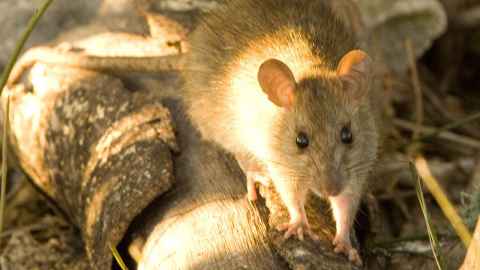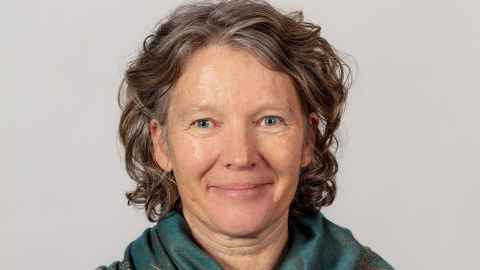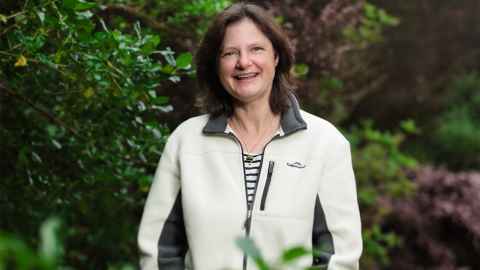Taking Issue: Is being predator free by 2050 realistic?
31 October 2022
Opinion: In Taking Issue from Ingenio magazine, three University of Auckland experts each have a limit of 350 words to discuss the goal to be predator free by 2050.

Professor James Russell: Social challenge, not biological
New Zealand started on a path to becoming predator free 60 years ago, when the first rat eradication was completed on a tiny island in the Hauraki Gulf.
Since then, introduced mammalian predators have been removed from half the islands they inhabit around New Zealand.
Our global study, published in August 2022 in Scientific Reports, shows New Zealand leads the world in island eradications and although the number of island eradications is slowing down, the area being cleared of predators continues to increase. This reflects a shift in focus from small and remote uninhabited islands to larger inhabited islands.
New Zealand leads the world in island eradications because of sustained investment over decades in the people, knowledge and technology required to achieve increasing scales of predator control.
The first breakthroughs made in the 1980s fine-tuned the methodology for ground-based eradication of predators. In the 1990s, the use of helicopters enabled aerial eradications over larger uninhabited islands. In the 2000s, the use of experimental invasions demonstrated that reinvasions could be successfully intercepted.
The challenge today when focusing on larger inhabited islands, such as Aotea (Great Barrier Island), Waiheke and Rakiura (Stewart Island), is successfully collaborating with inhabitants to find a pathway of shared values to achieving predator-free status. This is inherently a social and not a biological challenge, and requires a new toolbox to progress island eradications.
The challenge today ... is successfully collaborating ... to find a pathway of shared values to achieving predator-free status.

In a national study published in September in the Journal of Applied Ecology, we show different scenarios for predator control coverage of mainland New Zealand. Under all scenarios, a breakthrough in technology or new use of existing technology is required to obtain complete national coverage. Ongoing investment in people, knowledge and technology for predator control is therefore paramount.
Without such investment, we will not be able to fully realise the benefits predator control can bring to restoring birds and reptiles to their original ranges across the entirety of Aotearoa, and not just its far-flung islands. Being predator free by 2050 is realistic, but requires everyone to contribute towards this shared vision.

Professor Jacqueline Beggs: Importance of mātauranga
Large-scale community rat trapping, toxin packaged into toilet rolls, gene drives that could target predators. From backyard solutions to high-tech labs, there has been a massive surge in activity targeting rats, stoats and possums.
We don’t yet know how we can achieve eradication on the mainland, but we do know that it will require substantive ongoing investment. The question for me is not can we achieve Predator Free 2050, but should we?
The mauri, that is the natural lifeforce, of Aotearoa New Zealand is diminished. Overfishing, plastics and climate change threaten our marine systems, land use change means 90 percent of wetlands have been lost, kauri and other native plants are threatened by pathogens.
Eradicating mammalian predators will not solve these problems. Our unique biodiversity is spiralling downward with more than 7,500 species of plants and animals at risk. Not all these species are threatened by rats, stoats and possums, so even if we did achieve eradication, it would not deliver the stated goal of “native species safe from extinction and thriving alongside us”.
Given limited resources, where should we focus our effort to make the greatest gains? We need to evaluate the opportunity costs to ensure pursuing eradication of a few mammalian predators stacks up against gains that could be made in other areas.
Given limited resources, where should we focus our effort to make the greatest gains?
We are teetering on the edge of a catastrophic loss of biodiversity, escalating dangerous environmental conditions, and increasingly scary global, political and social responses that exacerbate human suffering and inequalities.
These issues interact and while there are many potential solutions, we continue to fail to implement the transformational changes required to achieve even modest sustainability goals. Holistic and equitable approaches are vital.
Traditionally, Māori values of kaitiakitanga (guardianship) and manaakitanga (care and respect) place caring for the land and people as central, interconnected ways of life that draw on mātauranga (Indigenous knowledge). Recognising the important contribution of mātauranga and adopting a more holistic approach could improve environmental outcomes and help drive the transformational change we need.
And, by the way, packaging toxin in toilet rolls is a terrible idea when young kākā love testing out novel objects.
He waka eke noa. We are all in this together.

Professor Rachel Fewster: Everyday people playing a part
The question is futuristic. So I’m taking a futuristic approach to answer it. If a time traveller were to tell me that Predator Free 2050 (PF2050) was indeed achieved, I’d be thrilled, delighted, exhilarated … and surprised. The conversation between us might go something like this.
Me: What was the breakthrough?
Time traveller: It was the xyloblobbacotyl technology.
Me: Wow, ingenious! Wasn’t around in my day.
Time traveller: Plus huge social buy-in and support.
Me: Now that I expected.
Time traveller: I don’t get it. Weren’t you expecting PF2050 to be successful?
Me: You know, I hadn’t thought about it much.
Time traveller: Then why did you put in all this effort towards it?
Me: Well, 2050 was never quite the point for me.
Time traveller: Didn’t you rate the PF2050 movement?
Me: On the contrary, I’ve been a huge fan. It was the best announcement I can remember.
Time traveller: Explain, please?
Me: It is the vision that’s been the powerful thing. The announcement inspired action and investment and lots of it. Overnight it became normal to want to be predator free, and normal to play a part. Trapping projects sprang up all over the place, run by regular, everyday people in their own backyards. Pretty much everyone was on board.
Time traveller: Sounds like a big win for wide-scale conservation?
Me: Goodness, yes. Beforehand, trapping was focused in parks and reserves. But outside the reserves, there was a mass of predators ready to flow back in. What PF2050 has accomplished is to give us the idea that there is no ‘outside’. The reserve is everywhere.
Time traveller: So you’ve already seen rewards?
Me: You bet! In 2021 we had the first korimako (bellbirds) in Auckland in 100 years. Soon there’ll be kākā all over the city too.
Time traveller: Well, it sounds like you should all keep at it!
But seriously, this is just a fantasy. If New Zealand really is predator free by 2050, there won’t be any willing time travellers. They’ll all be so captivated by the endlessly varying birdsong, the haunting notes of kōkako, the resounding booms of kākāpō and shrieks of kiwi, as well as wētā under every stone, and the enthralling colour-changing geckos – they simply won’t want to leave. Not even for a moment.
Professor James Russell is a conservation biologist in the School of Biological Sciences and Department of Statistics at Waipapa Taumata Rau, University of Auckland.
Professor Jacqueline Beggs from the School of Biological Sciences at Waipapa Taumata Rau, University of Auckland is an expert in conservation and endangered species.
Professor Rachel Fewster is a statistician in the Faculty of Science at Waipapa Taumata Rau, University of Auckland and co-ordinator of CatchIT, used for community conservation projects.
This opinion piece is part of the regular Taking Issue series that appears in the University of Auckland's alumni and friends publication Ingenio. This is from the Spring 2022 issue.
To republish in part or full, contact ingenio@auckland.ac.nz